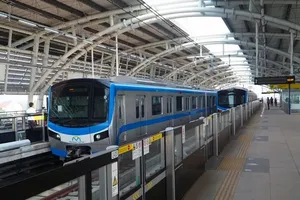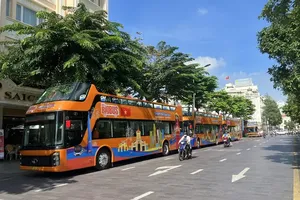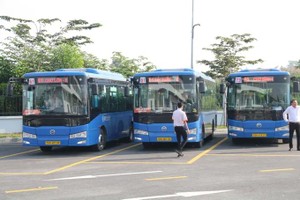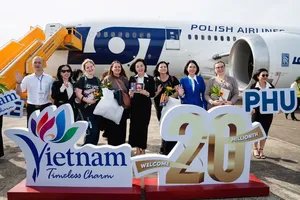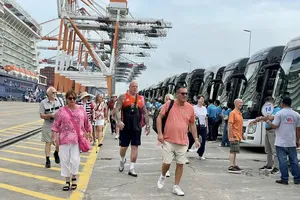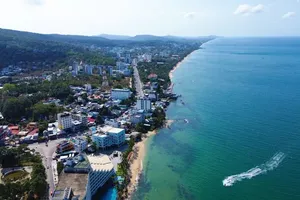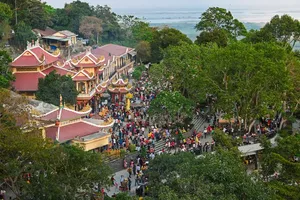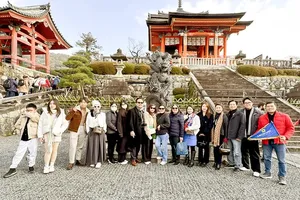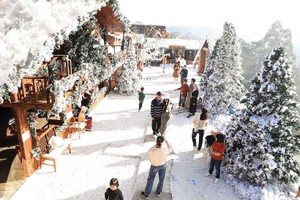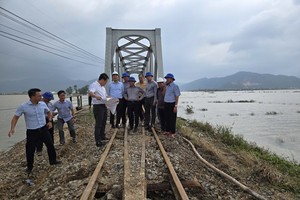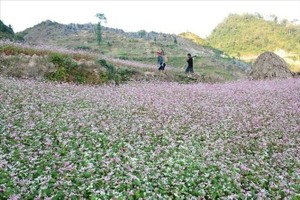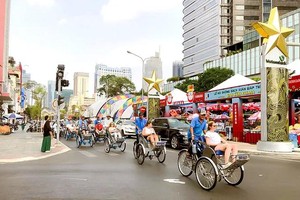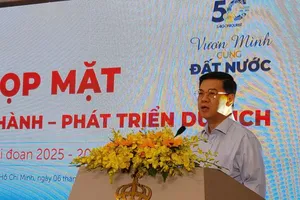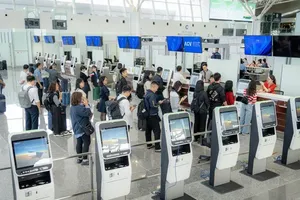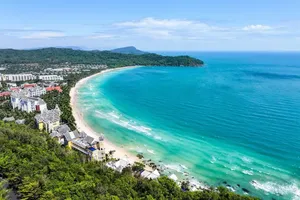It is the first large-scale meeting following the consolidation of tourism management systems across localities. It is also an opportunity for local authorities, businesses, and government agencies to discuss and resolve difficulties and propose policies aimed at accelerating the recovery of the tourism industry and enhancing Vietnam’s competitiveness on the regional and global stage.
Tourism rebounds strongly
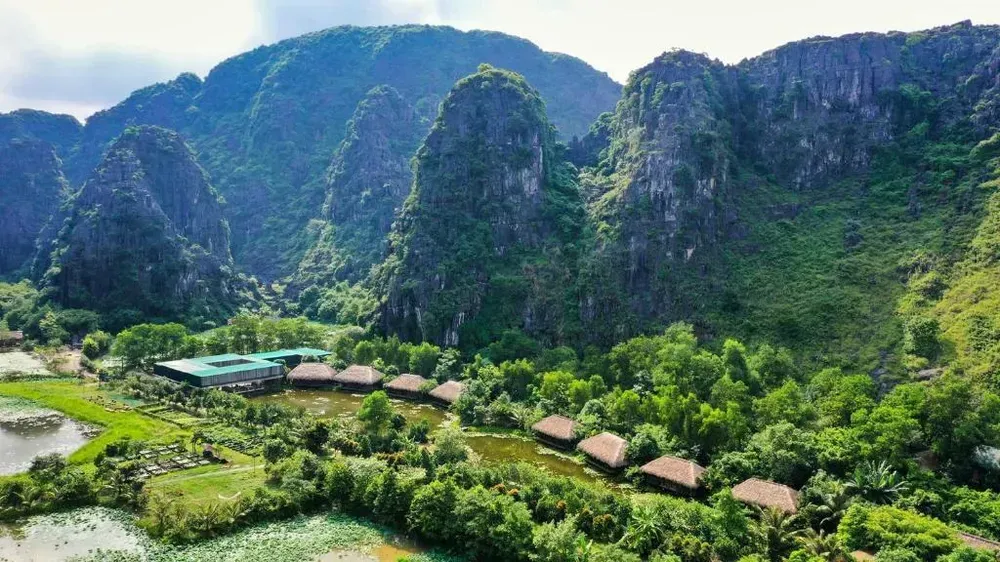
In the first half of the year, Vietnam’s tourism sector recorded significant achievements, showing a strong recovery and underscoring its growing importance to the national economy.
According to Mr. Nguyen Trung Khanh, Director General of the Vietnam National Authority of Tourism, the country welcomed nearly 10.7 million international arrivals, up 20.7 percent compared to the same period last year. Domestic tourism also grew steadily, with 77.5 million domestic trips, up 8.5 percent year-on-year. Total tourism revenue is estimated at VND518 trillion (US$19.8 billion), equivalent to 52.8 percent of the annual target.
Several localities reported impressive growth in visitor numbers and tourism revenue, including Ho Chi Minh City, Hanoi, Khanh Hoa, Kien Giang, and Thanh Hoa, contributing to further reinforcing tourism’s position as one of the bright spots of Vietnam’s economy in the first half of 2025.
Some localities have proactively linked regions and coordinated with major tourist centers, such as Hanoi and Ho Chi Minh City, to develop distinctive tourism products, with each province offering at least one main product.
During the five-day public holiday marking the National Reunification anniversary (April 30) and International Workers’ Day (May 1), products associated with patriotism are positively received, such as the Cu Chi tour inspired by the film titled “Dia Dao: Mat Troi Trong Bong Toi” (Tunnel: Sun in the Dark), programs marking the 1968 Spring Mau Than General Offensive and Uprising and the Great Spring Victory of 1975, Legends of the Sac Forest special forces, Journey of Memory, and 50 Years—Return to the Beloved South.
However, Director General of the Vietnam National Authority of Tourism, Nguyen Trung Khanh, also underscored a number of challenges that must be addressed in the remaining six months of the year. These include intensifying regional competition, rising airfares, underdeveloped tourism infrastructure, inconsistent service quality, and a lack of depth in tourism offerings.
The tourism sector needs to continue restructuring target markets, focus on promoting more effectively and professionally, and strengthen regional linkages, especially improving service quality to attract visitors, Mr. Nguyen Trung Khanh emphasized.
Developing unique tourism products, awakening emotion
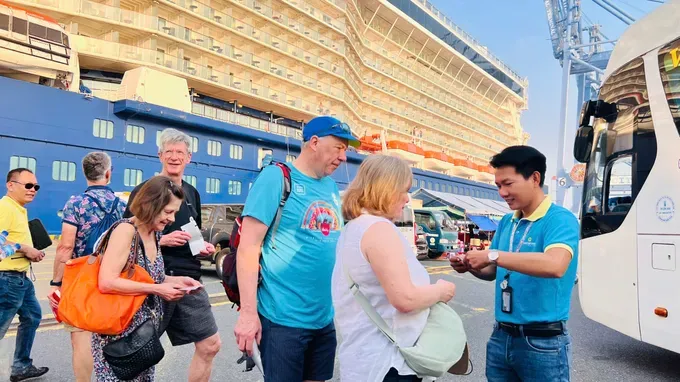
Outlining the strategic direction for the tourism sector, Minister of Culture, Sports, and Tourism Nguyen Van Hung emphasized that it is necessary to propose good solutions to make tourism truly become a driving force for socio-economic development.
According to Minister Nguyen Van Hung, following the consolidation of the administrative management system, many localities are now without specialized departments, and leadership teams remain relatively new. Therefore, it needs to be more proactive and determined to achieve the goal of welcoming 23 million international visitors by 2025.
Minister of Culture, Sports, and Tourism Nguyen Van Hung also emphasized the urgent need for a shift in approach. It needs to approach tourism from a new perspective, a cultural perspective. Tourism only generates true value when it is deeply rooted in local identity, with products that reflect regional uniqueness, cultural depth, and lasting impressions, he said.
The Minister of Culture, Sports, and Tourism proposed the development of spatial linkage routes, highlighting connections between the Central Highlands and the South Central Coast, with Gia Lai and Binh Dinh cited as a prime example.
Such products would allow tourism to go beyond surface-level experiences, touching the real emotions and experiences of tourists. The goal aims to create a lasting impression on visitors to Vietnam, not only for its scenic landscapes but also for the deep emotional resonance their journey inspires, he stressed.
China and South Korea remained Vietnam’s two leading source markets for international visitors, with more than 2.7 million and 2.2 million arrivals, respectively. Several other Asian markets posted remarkable growth, including India (up 141 percent), the Philippines (up 205 percent), and Laos (up 135.8 percent). The vast majority of international air travelers accounted for over 85 percent of total visitors.
According to Minister of Culture, Sports, and Tourism Nguyen Van Hung, tourism in the modern era must not only move on foot but also advance through technology. It must enable travelers to explore the entire country from the real to the virtual while sitting in their places, from the traditional to the modern. The tourism industry needs pioneering individuals who dare to think differently, act decisively, and lead innovation. Now is the time to put forward proposals and identify distinctive products.
Chairman of the Vietnam Tourism Association, Vu The Binh, expressed his support for this strategic direction. He emphasized the need to effectively combine both traditional and modern promotional approaches. Localities need to review existing tourism products, clearly identify strengths and weaknesses before carrying out regional linkage and formulate targeted and efficient cooperation strategies, avoiding duplication and fragmentation.
Representatives from localities have also proposed a range of solutions for fostering tourism development that is more in-depth, sustainable, and brand-driven.
Key recommendations included strengthening linkages between tourism and other sectors across the value chain; enhancing the competitiveness of Vietnam’s tourism industry associated with green and sustainable development; embracing a visitor-centric approach that places traveler experience at the core; diversifying tourism enterprises with strong competitive capacity to encourage deeper integration into the global tourism supply chain.
With a clear strategic direction, a fresh approach, and determined commitment from central to local authorities, Vietnam’s tourism sector is gradually “redrawing the map,” opening up new “lifelines” to become a truly key economic driver that is inspiring, sustainable, and deeply integrated into the new era.

